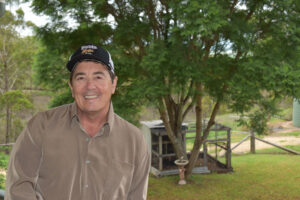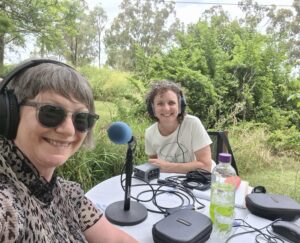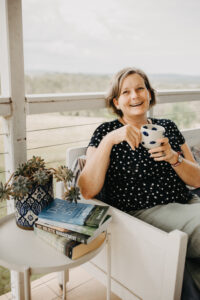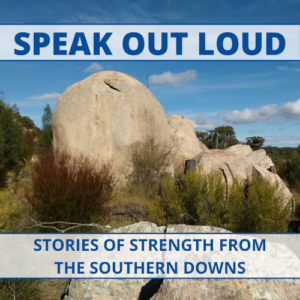THE SHE HIVE LADIES SHED, STANTHORPE
Transcript from the podcast “Speak Out Loud: Stories of Strength from the Southern Downs”
SEASON 2: EPISODE 2
GUEST: Glenda Riley, She Hive Ladies Shed; Photographer
PUBLISHED: 14th February 2022
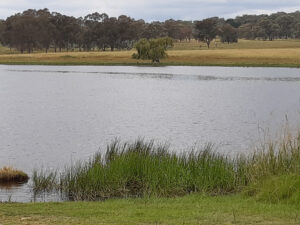
[00:00:00] Glenda: We were watching traffic and there was just this constant stream of traffic coming out to have a look at the dam, which mostly, oh yeah well, it’s just a dam full of water, but it was a reassurance I think, from a lot of local people, they were coming out. Oh, thank goodness the dam’s full. And they were just coming out to be reassured that that difficult part of our lives is, was behind them.
[00:00:31] Kathryn: Today’s guest on the podcast is Glenda Riley who joined me to share information about the She Hive which is based in Stanthorpe. The She Hive is a solution focused, inclusive social group for women that empowers its members to share their skills, knowledge, and their presence with each other. Glenda believes that the powerful energy that’s brought to the group each week comes from the group’s philosophy: I believe you. I see you. I have a voice. And Glenda also spoke to me about the need to not assume that we know what somebody else needs, but to always ask them “What can I do to help? What would be most helpful?”
Hello, Glenda. Welcome to the podcast.
[00:01:17] Glenda: Hi Kathryn. It’s lovely to be with you today.
[00:01:20] Kathryn: Glenda, I’d love to hear from you. What’s your connection with the Southern Downs?
[00:01:25] Glenda: Well, I’ve been a resident here for eight years, a regular visitor for over 20 years. But what drew me to the region is that it’s very similar in climate, agriculture, tourism where I grew up in Victoria. So it’s been a bit like coming home.
[00:01:40] Kathryn: And we’re here today at the She Hive.
[00:01:43] Glenda: Yes, you are. Welcome to the She Hive and all that it is.
[00:01:47] Kathryn: It’s wonderful to finally come here and be in the She Hive and see where you and the other women come and gather together. Can you share with our listeners the story of how the She Hive began and what inspired the name She Hive?
[00:02:03] Glenda: Wonderful questions, Kathryn. This came out of the bushfire and drought response of 2019 and 2020. We all know what happened here in Stanthorpe in September 2019. But before that we’d been dealing with drought for a couple of years and it was starting to really take its toll. There were job losses, there were families being split because dad was going away for holidays, for work and things like that. And we just decided, we were doing water. We were offered to distribute water. It was just a group of us doing it to start with. We were all country girls that wanted to do something, and this is how it started. But then of course the fires came through, and it just changed to a water crisis response. So for nine months we actually distributed millions and millions of litres of drinking water. And then we got a contract with Carlton United Breweries at Yatala to bring non-potable water at 40,000 litres at a time up into the Southern Downs out to different graziers, orchardists and local nurseries just to help them keep their doors open, keep food on the table and give them a little bit of hope. But we had rain in February 2020, and that sort of seemed to fill the dams and fill the water tanks. So the pressure was off a little bit, but we were still distributing water and other food and clothing and things like that cause we were getting the overflow from the bushfire response down in New South Wales. So it came to June in 2020 and we said I think we’ve done enough with that. We weren’t needing that, people weren’t needing that response, needing that support as such, but right through it, what we found with our volunteers were telling me and others that we were identifying the women, at home, be that in town or on the farm or wherever, they were the ones that was making the sacrifice.
They were looking after hubby. They were looking after the kids. They were looking after the farm. Like if hubby had gone away for work, just to get money onto the, into the home. And they were suffering. It was really, really tough. They’d come in to get their water and they’d often stand and talk for another 20 minutes, half an hour. So with the research I’d been doing and listening and observing what was going on, and with a couple of the other ladies that were volunteers, we decided to push ahead and research a women’s shed because mental health was becoming a very strong focus on what to underpin, how we were going to rebuild the community and you know, just make us, to heal us, I suppose, is another way of putting it. So with research and then with the help with Southern Downs Regional Council we managed to get a lease here at Storm King Dam, the Fred Rogers Recreation Camp. So we’ve got eight acres here that we have to play with. So it’s been an amazing 12 months so we opened our doors just 12 months ago to the women’s shed concept here.
Because I’m a great believer in community, a great believer in people taking ownership of what they’re doing, we ran a competition for a name. I mean, I had my ideas, but, one of our members our current secretary, in fact, she came up with the idea of the She Hive and we just loved that idea because it’s so symbolic and the fact that it’s about bees, you know, they’re a colony, they look after themselves, they’re a collective, they work to create and to survive. And I thought, well, then, that’s really like us. And then of course, the honeycomb is, of course, that connection to each other and to the community. So this is how it came about. But 12 months down the track, yes, we’re doing well.
[00:05:34] Kathryn: That’s a fabulous story. And, one that I hadn’t heard before, so I’m really thrilled to hear about that.
[00:05:40] Glenda: It’s just been supporting, you know, like it’s open to anybody.
[00:05:44] Kathryn: And that’s what I was going to ask you. Who is the She Hive for?
[00:05:48] Glenda: Anyone of the female gender that comes around you know, that either lives here, or bringing the visitors here, they’re more than welcome to come along. So anyone in the Southern Downs, Granite Belt, anywhere. I mean, we’re happy to see people from over the border, now that that situation has calmed down a bit. So you know, we’re looking at that when we have open days or a big workshop, we’ll be expanding that out to other things, but, you know, it’s small steps still.
[00:06:13] Kathryn: Absolutely. What sorts of activities are being offered with the She Hive?
[00:06:19] Glenda: Well, on a weekly basis, there’s always, as you can see we’ve got our tea room and that here, there’s always coffee and a chat, always. Regardless. And then to that we’re adding things like doing a bit of craft while we’re here. We don’t believe in sitting in the room, just doing craft. We’ve expanded our things. We might have a discussion about what’s going on. We might have a book discussion or some of us would go to a movie and we’ll talk about the movie. Things like that. So there’s always something. So we’re looking at different things. Looking at different art techniques. Education wise and sort of, as part of our philosophy is knowledge. So that’s things like fire safety coming up this year. Things of interest. I sit and listen to what the girls are saying, and I observe how they’re reacting to what we’re doing, and then we bend and we adapt to what their needs are because we’re listening to what they need and want.
[00:07:10] Kathryn: How often are the women meeting together?
[00:07:13] Glenda: Currently we’re meeting weekly on a Thursday. It was only for a couple of hours, but so that’s extended out for about four hours now, four or five hours for those.
[00:07:22] Kathryn: It’s a popular place to be.
[00:07:24] Glenda: Yeah, it is. And they can come along and they’re safe here and they can then be themselves. So it’s really important. We are looking at with the amount of planning we’ve got going on, what we’ve got planned. We may end up going to two days a week at some point during the year and with weekend workshops now, and again as well, just depending on what’s happening.
[00:07:42] Kathryn: What kind of financial costs are involved for the women who are involved or would like to get involved?
[00:07:49] Glenda: Well, as a charity, we’ve kept our costs right down because that was one of the things we identified in the early days was that not everyone can afford to go out and spend 10, $15 on a cup of coffee and a sandwich, which is what it is the average these days. So they couldn’t afford that. They were missing out on that social interaction with their friends. Our weekly cost is a dollar and annual membership fees, $10. And this year we’re doing a Christmas Club, which will be about $4 a week and that is going towards an end of year outing. And because a few of us have said “Oh, we’d love to do the steam train to Wallangarra.” So that’s what we’ve elected to do at the end of the year. So for a weekly contribution of $5 such if you want to join that Christmas club, so at the minimum it’s a dollar. You’ll have the benefit of new friends, catching up, learning something new, and being with other women and going on outings. So we think that’s pretty good value.
[00:08:48] Kathryn: What a fabulous thing to do. And that’s connecting with one of the other wonderful resources in the local community, the steam train.
[00:08:56] Glenda: Yeah we’re looking forward to that.
[00:08:57] Kathryn: How is the She Hive organised as a group? Is there a leadership team or a committee?
[00:09:03] Glenda: Well, because we were doing water, we incorporated as a not-for-profit charity and we’re also registered with the Australian charities, not-for-profit commission. We’re fully compliant in that regard legally and that sort of thing. Our official name, our legal name is Granite Belt Community Assist Group. So we have the She Hive as one section, and then we have water oddly enough. We still have our water.
[00:09:28] Kathryn: You never know when you might need that again.
[00:09:30] Glenda: No we don’t. You don’t. And benevolence on there. So we do a certain amount of benevolence each year. Only a small amount, just enough to keep things going and keep us registered as a charity. So we support, I think last year we supported the local cancer support group and this year we’re going to be doing the same so, that’ll be a big thing in October. So we’re looking forward to a bit of fun. So we’re going to expand what we were doing on that.
[00:09:54] Kathryn: How many women are coming along to the She Hive meetings Glenda, or are involved? I’m sure there are some involved on the fringes as well.
[00:10:04] Glenda: We’ve got a core group, probably between 10 and 12 that are regular members, and then we’ve got another probably 10 to 15 that come when they can. And that’s the other thing we don’t expect people to come every week.
[00:10:15] Kathryn: Why do you think the She Hive has been so successful? What needs do you think are being met there?
[00:10:21] Glenda: There’s no one thing that I can really pin down for that but I think offering solutions to mental wellbeing in a non-confrontational, safe and inclusive environment. I think that’s probably the main thing. However, we offer a variety of activities and outings. We don’t sit in a room doing craft every week. We’re out and about doing things where we get involved with each other. We get involved with the community. We’re getting involved with other local businesses by supporting them, you know, with our outings and things like that. But we hear about mental health programs that always ask about “Are you okay? Feeling depressed, tired, stressed?” I see them all as negative questions. I much prefer to ask the positive question of our team, of our members. “Are you going home invigorated and happy? Are you coping with what’s happening at home? Are you getting out and about and meeting your new friends outside She Hive activities? Are you feeling better in your life itself?” And to me if they’re answering yes, to that same question, to me, that’s a win. That is an absolute win.
[00:11:26] Kathryn: And framing it in that positive way, also gives people a little bit of a beacon to work towards. Rather than “Am I stressed?”, the focus then is on the stress. By flipping it around and reframing it, it’s on the, “What makes me feel good? What makes me feel invigorated?” And there’s that action towards that.
[00:11:48] Glenda: Yes. And even my own experience with mental health. And that was the one lesson I learned out of that. But the other thing that I really learned out of my own experiences, and it really underpins what we do and that is “We believe in you. We support you. We see you. And everyone has a voice.” And that to me is the core, absolute core foundation of what it is we do.
[00:12:10] Kathryn: That’s fabulous. I love that.
[00:12:12] Glenda: So no one is different. No one is treated any differently. We’re all the same. We all come together on a level playing field. But, you know, we’re sensitive to people’s needs and we work around that as much as we can.
[00:12:24] Kathryn: That sounds beautiful. Using one of your positive frames, Glenda, what are your hopes for She Hive into the future?
[00:12:32] Glenda: Continuing what we’re doing, building on our business model and making sure that the women of the region and our visitors are getting the best experience possible they can with what we’re doing. We try to keep things simple. We don’t over-complicate things. And I think sometimes if you’re struggling a little bit mentally, or your physical health is not as good, you don’t need anything complicated. You just need to come along, sit and even just sitting, listening to the others talking. I mean, quite often we can have five, or six conversations going at once and just being with others can be very healing.
[00:13:05] Kathryn: Where can people find out more about the She Hive and what’s the next step if someone’s listening and they’re thinking that they might like to get involved with the She Hive?
[00:13:18] Glenda: Well we’ve got our social media presence. We’ve got a website. And my phone number is there for everyone to pick up the phone and send a message or have a call. But we also encourage anyone that wants to they’re welcome to come along to one or two sessions. The way things are, at the moment, we’re having coffee in the park on a weekly basis.
That’s a little bit more laid back, not as structured. You can just roll up with a cup of coffee in your hand, sit and have a yarn for a while, especially if you don’t know the people, you can just stop and chat and have a few minutes and just eases people into meeting others and, and getting to know people, because I think we can all be a little bit intimidated by walking into an environment where you don’t know anyone. So we offer that.
[00:14:01] Kathryn: That sounds really terrific. And we’ll be sure to include those contact details and the web link in show notes. And it sounds like you’re really aware how important it is to be connected to other people in your community, whatever feels right for you. And that could mean being connected by being really involved in the structure of a club or a group like She Hive, but it can also mean those informal connections. You know, if you happen to see someone at the park, who’s having a picnic there that, you know, being able to stop and say good day and stop for a cuppa with them.
[00:14:38] Glenda: It’s just trying to find that balance between what everyone wants, like it was last week, someone new to the region and wanted to catch up and I thought, well, you know, how nice. It’s just the way things are at the moment I thought the weather’s nice. Let’s just have a coffee in the park. So I said, well, we’re doing it next week. Okay.
[00:14:55] Kathryn: We’ve talked a little bit about the She Hive. I’m aware that you also have some other roles in the community though. Glenda in late 2021, the community hosted a photo exhibition called Hope and Growth. And that was a collaboration with the Southern Downs, Regional Council and federal and state funding as part of the bushfire recovery journey for the region. And that’s when I first met you, was at one of the exhibition openings in Stanthorpe. And I got to see some of your photos and there were other people had exhibited their photos and poetry there as well. I’m wondering, how did you come to be involved with that photo exhibition?
[00:15:39] Glenda: I’m a little bit like a magpie when it comes to taking photos. So I guess I’ll take anything and everything, but I happened to be in town that day of the fires came through cause I was, we were setting up to distribute water the next day. And of course, I always travel with my camera but when I realised this fire was not going to be insignificant, it was going to cause a great deal of issues, I stepped into my photo journalism role that I’ve done in the past and just got a few photos and that sort of thing. When I was contacted to share them, I thought “Yes, I think this story needs to be told just how it was.” Even just so I think I said to you at the time, I said, just looking at it now in print, it’s just reminded me of just how hard that was and how difficult that was for people at that time and how scary it was watching the fire go up Mount Banca there, just on sunset and coming down, trying to jump the creek. That was pretty scary.
[00:16:34] Kathryn: So looking back, reflecting back on those times that were quite scary at the time, how was it helpful to take the photos, and to look back at the photos when it came time for the photo exhibition?
[00:16:52] Glenda: It didn’t disturb me as such but it was a chance to reflect. It gave me a chance to reflect on what I was doing then, to what I’m doing now and how that’s changed me. I’m not sure whether that’s for the best yet, but, yeah, no it’s how it’s changed. And I think it’s important that as a photographer, where as anyone or as a writer or a photographer that we record our history. And when I was putting them, collating them to pass them on for printing, I’ve realised that this is part of history here. This is part of this region’s history that is being recorded.
[00:17:30] Kathryn: Part of the community identity and the recovery is also part of the identity of the community isn’t it? And when you look outside today, and it’s not that long ago, that Storm King Dam was empty and water was being trucked to Stanthorpe and to see it full now and to look out and see a paddock of grass and the seedy grass heads waving in the breeze is, it’s an incredible contrast from drought to bush fire to the more lush times that we’re having this season.
[00:18:03] Glenda: Well, it is, well, when we first started coming out here, and we first set up, we’d sit in the office and we’d look down across the dam and there were two fence posts there and I kept thinking “Why don’t they just pull them out?” They became like our yard stick every time it rained. “Ooh, it’s come up a bit more. Oh no, it’s gone down again.” So it became a bit of a yard stick there for a couple of months until we had the good rains in March 23 last year when it filled overnight. It was amazing. And I kept a promise to myself too, and then that next day I said I would go swimming right at the beginning. I said “When that dam fills, I am going swimming.”
[00:18:37] Kathryn: And did you?
[00:18:38] Glenda: Did how I certainly did.
[00:18:39] Kathryn: What a wonderful way to celebrate having water!
[00:18:42] Glenda: Yeah. So I was right in.
[00:18:44] Kathryn: Did you take any photos of the full dam?
[00:18:47] Glenda: Yes I did. I was there that day. I was on under contract with the Courier Mail to take a photo of the full dam so that’s why I was out there. And they said their journalists had been out and they’d taken a photo and they asked me could I get to that same place. So I went yeah, I’ll do my best, but I was out in the water up to my neck.
[00:19:04] Kathryn: Oh, wow. You had to go for a swim for the job.
[00:19:07] Glenda: Oh, absolutely. Yeah. So it was a pleasure to do it too. And it was just lovely.
[00:19:13] Kathryn: Recording those images after the dam filled or as it was filling, that’s an important part of history as well. Isn’t it? And in beautiful contrast to a couple of years ago with the fires?
[00:19:26] Glenda: Well, it is, and I mean, it was interesting when we were here, we were watching traffic and there was just this constant stream of traffic coming out to have a look at the dam, which mostly, oh yeah well, it’s just a dam full of water, but it was a reassurance I think, from a lot of local people, they were coming out. “Oh, thank goodness the dam’s full.” And they were just coming out to be reassured that that difficult part of our lives is, was behind them.
[00:19:51] Kathryn: And there’s always change. And when you’re in that place of that difficult time, it can feel like there’s no hope, that it’s not going to get better. And so reminding ourselves, even if it’s to go back and look at those images that you’ve looked at in the past and seeing how far we’ve come, I imagine can be really useful for a lot of people.
[00:20:13] Glenda: It is and it’s quite healing. It’s a very positive way of looking back. And, you know, we build, we talk about resilience and strength and things like that. But at the end of the day, we all, we all do our bit. I had someone ask me some time ago. I can’t recall who that was now, but they said “Do you consider yourself a hero?” And I went “No, I don’t.” I said who I would call the heroes is every person in this community who has survived, changed, survived, and adapted to our changing needs and wants over the last year. I said] they’re the heroes, not me.
[00:20:53] Kathryn: I think the key word there is being able to adapt.
[00:20:57] Glenda: Yeah, it’s accepting the fact you can’t there’s certain things you can’t change. You can only work with what you’ve got in front of you and to me that’s where the real heroes are.
[00:21:05] Kathryn: That’s fabulous. Thank you, Glenda. It’s been a wonderful privilege to come out and see the She Hive and see the dam that’s so full and to spend a little bit of time with you.
[00:21:17] Glenda: You’re welcome, Kathryn. And it’s an absolute pleasure.
[00:21:20] Kathryn: Thanks for listening to the Speak Out Loud: Stories of Strength podcast with me, Kathryn Walton. I hope this episode inspires you to get involved and get connected with your community. You can find the transcript and any links mentioned in this episode in the show notes, and please share the podcast with your friends.
We acknowledge and pay respect to the past, present and future Traditional Custodians and Elders of this nation and the continuation of cultural, spiritual and educational practices of Aboriginal and Torres Strait Islander peoples.
Series 2 of this podcast has been jointly funded under the Commonwealth and State Disaster Recovery Funding Arrangements 2018.
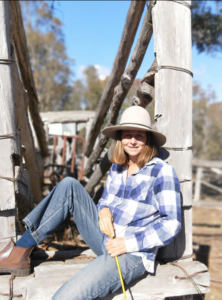
 Kathryn Walton shares information and reflections in Daisy Spoke that connect, inspire and self-empower women to make healthy choices for themselves. She integrates her love of physical exercise, family, nature, gardening and creative arts with her professional background in mental health social work to facilitate change with individuals, groups and communities of women who are committed to living life to the full.
Kathryn Walton shares information and reflections in Daisy Spoke that connect, inspire and self-empower women to make healthy choices for themselves. She integrates her love of physical exercise, family, nature, gardening and creative arts with her professional background in mental health social work to facilitate change with individuals, groups and communities of women who are committed to living life to the full.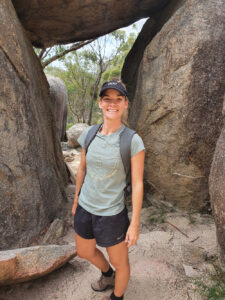
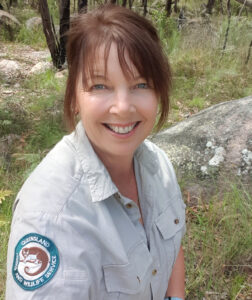
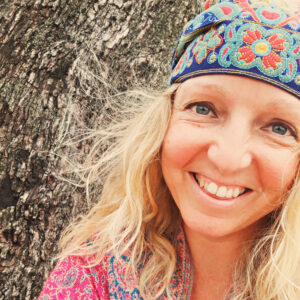 This is the transcript from Season 2, Episode 4 of the
This is the transcript from Season 2, Episode 4 of the 